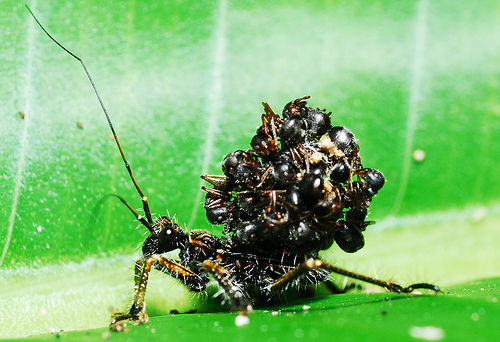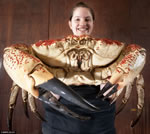Today's readers have been in:
Petaling Jaya, Malaysia
Kuala Lumpur, Malaysia
Kuantan, Malaysia
Doha, Qatar
Skudai, Malaysia
Islamabad, Pakistan
Tel Aviv, Israel
Klung, Malaysia
Dhaka, Bangladesh
Copenhagen, Denmark
Zurich, Switzerland
Amsterdam, Netherlands
Riga, Latvia
Warsaw, Poland
Dublin, Ireland
Istanbul, Turkey
Belgrade, Serbia
Vienna, Austria
Nyon, Switzerland
Dar es Salaam, Tanzania
Bern, Switzerland
Groningen, Ntherlands
Kota Kinabalu, Malaysia
Johannesburg, South Africa
Taipei, Taiwan
Seremban, Malaysia
San Juan, Puerto Rico
Cork, Ireland
Kuching, Malaysia
Tallinn, Estonia
Athens, Greece
Kuala Terengganu, Malaysia
Singapore, Singapore




 Think
about how much you paid for your last airline flight. Then imagine how
much an unlimited-use lifetime first-class airline pass would be worth
-one in which you could take a companion of your choice on each
flight. American introduced the AAirpass in 1981 for $250,000. The
price later went up, and the companion pass was extra, but it was always
worth more to those who flew a lot. Steven Rothstein and Jacques Vroom
each bought passes early in the program and flew everywhere -all the
time.
Think
about how much you paid for your last airline flight. Then imagine how
much an unlimited-use lifetime first-class airline pass would be worth
-one in which you could take a companion of your choice on each
flight. American introduced the AAirpass in 1981 for $250,000. The
price later went up, and the companion pass was extra, but it was always
worth more to those who flew a lot. Steven Rothstein and Jacques Vroom
each bought passes early in the program and flew everywhere -all the
time.
 Actor
and comedian George Lindsey, best known for playing the character
Goober Pyle on television, died Sunday in Nashville. He had been ill
since suffering a stroke in March.
Actor
and comedian George Lindsey, best known for playing the character
Goober Pyle on television, died Sunday in Nashville. He had been ill
since suffering a stroke in March.


 “(According to Mr. Xia, director of Office of Academic Affairs,) the
state grants a 10-yuan subsidy for amino acids to each graduating senior
that will participate in the gao kao (National College Entrance Exam).
Any student that feels not well can go to the infirmary and take amino
acids on the IV drip,” Mr. Xia explained. He said that some students had
been below par recently due to the sudden weather changes in the city
of Xiaogan, and the school infirmary had been packed with students. In
order to spare students the trouble of running back and forth between
the infirmary and the classroom and save their time, the school decided
to arrange IV drip sessions right in the classroom.
“(According to Mr. Xia, director of Office of Academic Affairs,) the
state grants a 10-yuan subsidy for amino acids to each graduating senior
that will participate in the gao kao (National College Entrance Exam).
Any student that feels not well can go to the infirmary and take amino
acids on the IV drip,” Mr. Xia explained. He said that some students had
been below par recently due to the sudden weather changes in the city
of Xiaogan, and the school infirmary had been packed with students. In
order to spare students the trouble of running back and forth between
the infirmary and the classroom and save their time, the school decided
to arrange IV drip sessions right in the classroom.
 Reach
back into the deep recesses of your mind and recall the bell
curve from that statistics class.
Reach
back into the deep recesses of your mind and recall the bell
curve from that statistics class.  Much
to the chagrin of my high school English teacher, my classmates and I
always got our metaphors and similes mixed up.
Much
to the chagrin of my high school English teacher, my classmates and I
always got our metaphors and similes mixed up. 
 Scientists
are concerned about spilled coffee, because long hours of research
require coffee, and a spill can ruin your train of thought, if not your
valuable notes. Mechanical engineer Rouslan Krechetnikov of the the
University of California, Santa Barbara, and graduate student Hans Mayer
did some experiments after noticing coffee being sloshed at a fluid
dynamics conference (of all places).
Scientists
are concerned about spilled coffee, because long hours of research
require coffee, and a spill can ruin your train of thought, if not your
valuable notes. Mechanical engineer Rouslan Krechetnikov of the the
University of California, Santa Barbara, and graduate student Hans Mayer
did some experiments after noticing coffee being sloshed at a fluid
dynamics conference (of all places).
 The
word scurvy may make you think of pirates and sailors on long sea
voyages, but “land scurvy” affected many European Crusaders who spent
months trudging through the Middle East. In 1747, Scottish physician
James Lind found that oranges and lemons could cure scurvy, but that
didn’t help all sailors.
The
word scurvy may make you think of pirates and sailors on long sea
voyages, but “land scurvy” affected many European Crusaders who spent
months trudging through the Middle East. In 1747, Scottish physician
James Lind found that oranges and lemons could cure scurvy, but that
didn’t help all sailors.
 There
were two guys on a motorcycle driving down the road. The driver was
wearing a leather jacket that didn't have a zipper or any buttons.
There
were two guys on a motorcycle driving down the road. The driver was
wearing a leather jacket that didn't have a zipper or any buttons.



 A
guide dog is not news, but a guide dog for a dog? Now that's neat! Here's
a heartwarming story of a blind dog and its guide dog:
A
guide dog is not news, but a guide dog for a dog? Now that's neat! Here's
a heartwarming story of a blind dog and its guide dog:
